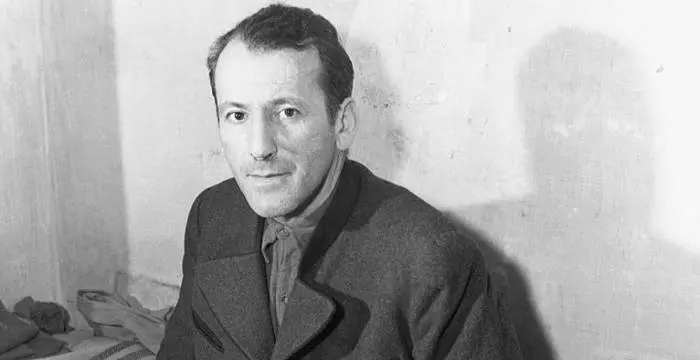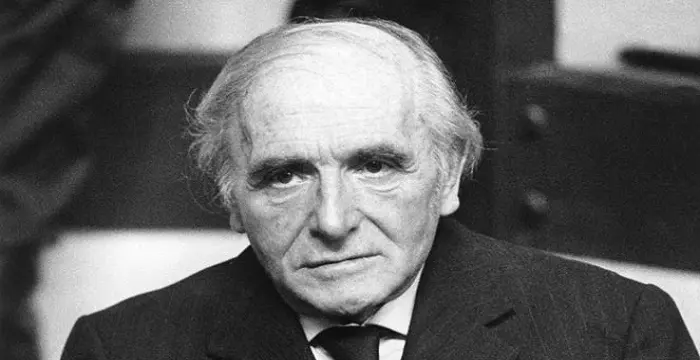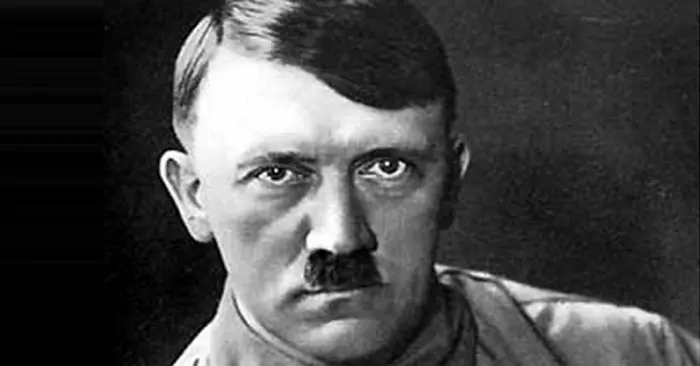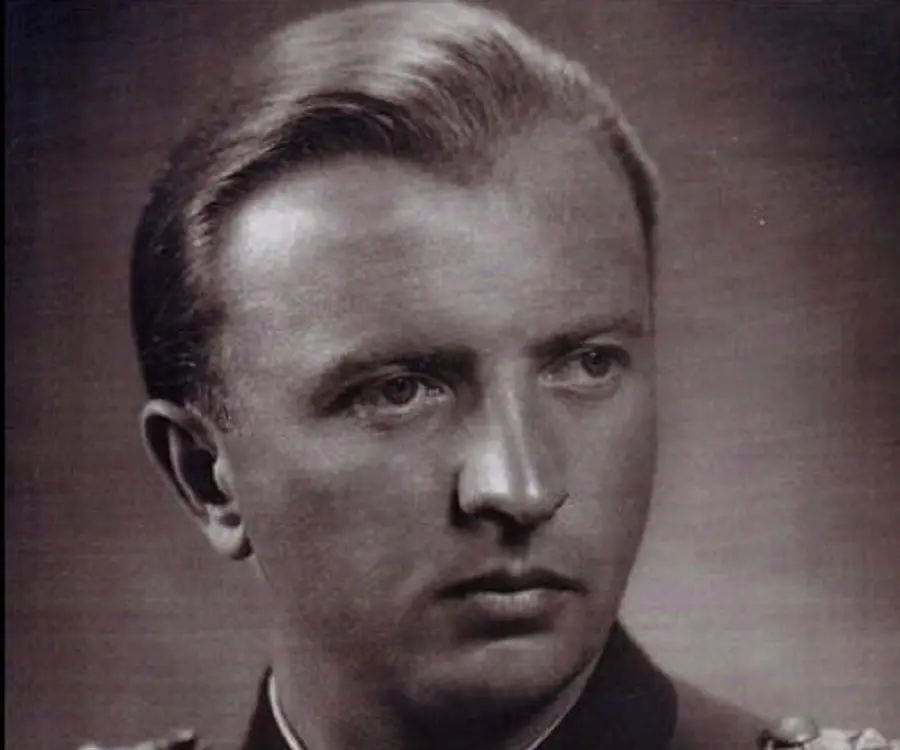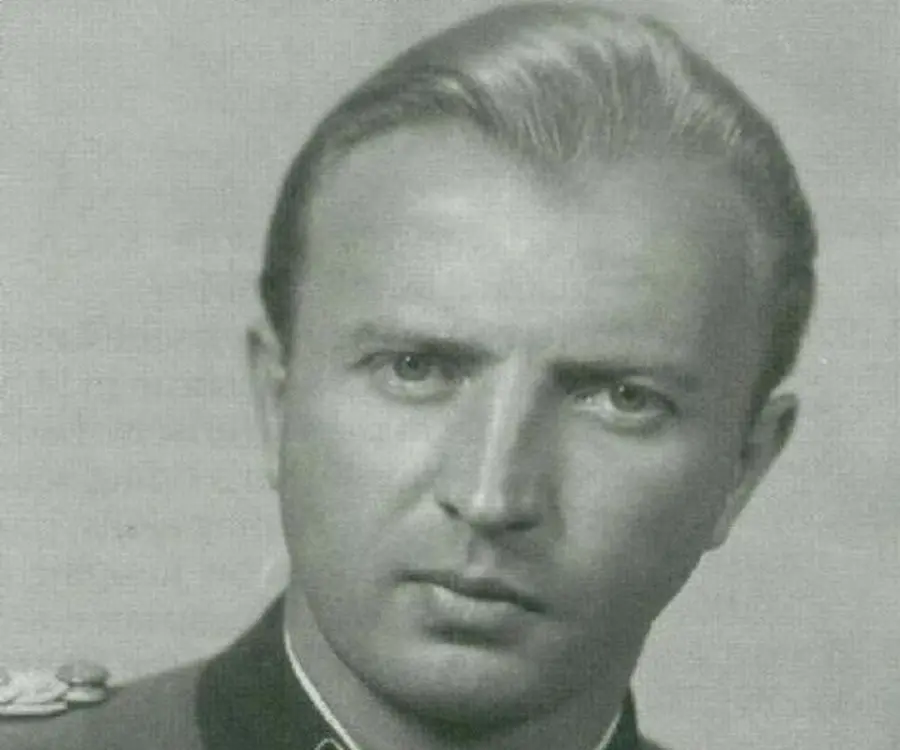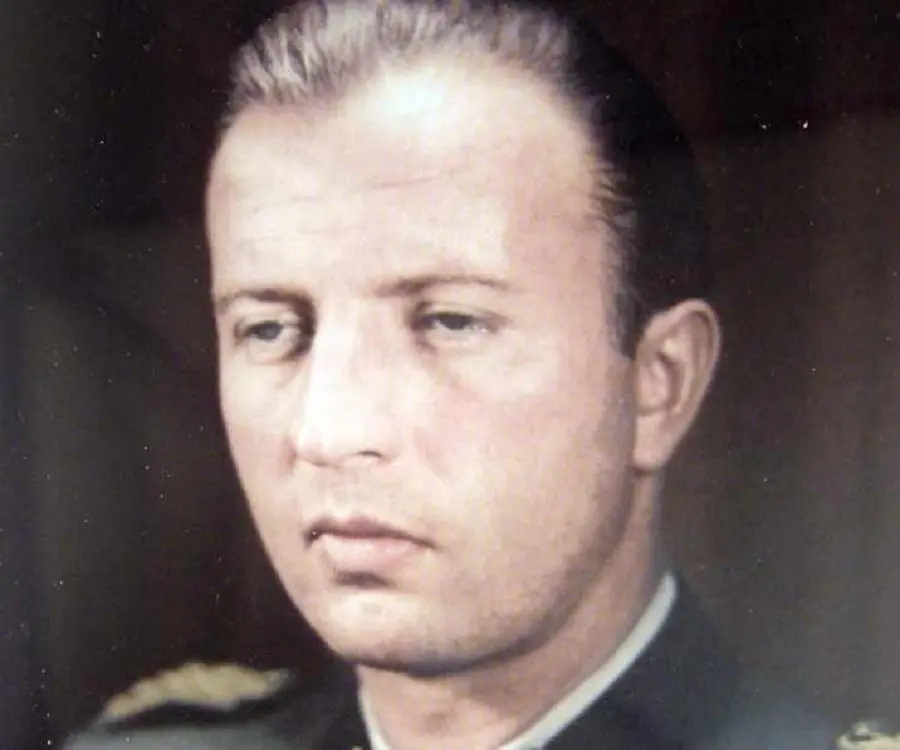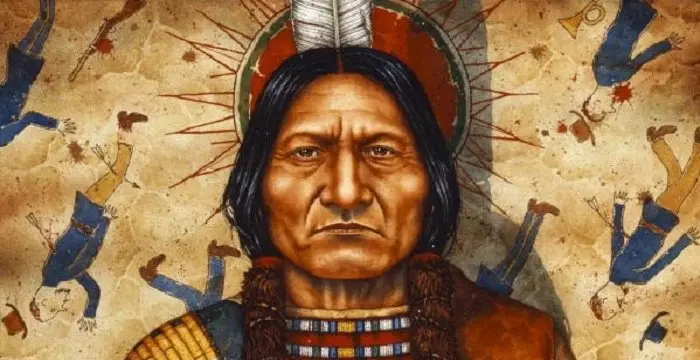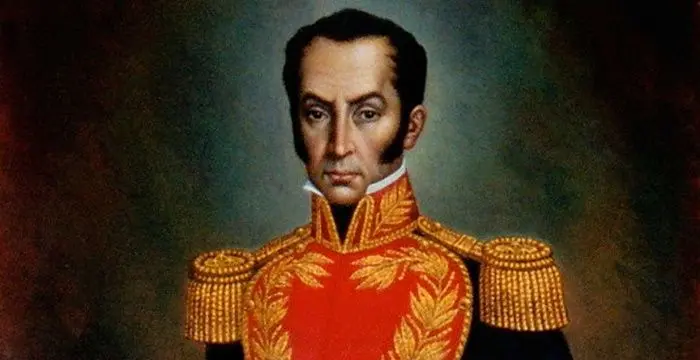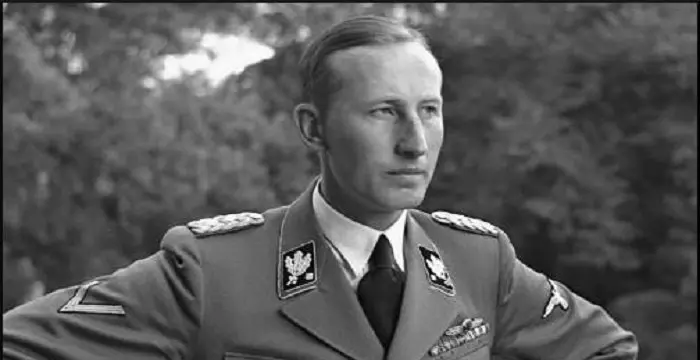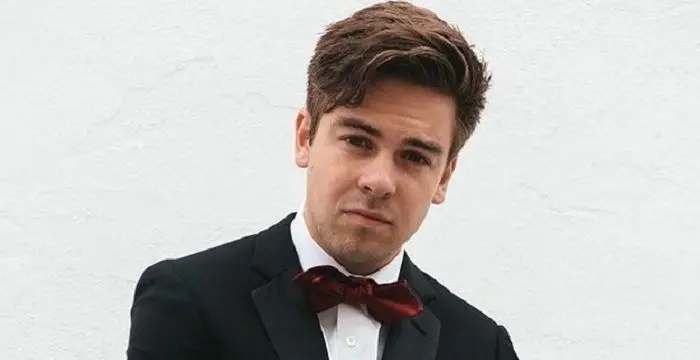
Hermann Fegelein - Nazi Leader, Birthday and Childhood
Hermann Fegelein's Personal Details
Hermann Fegelein was a high-ranking Waffen-SS commander in Nazi-ruled Germany
| Information | Detail |
|---|---|
| Birthday | October 30, 1906 |
| Died on | April 28, 1945 |
| Nationality | German |
| Famous | Leaders, Military Leaders, Nazi Leader |
| Spouses | Gretl Braun |
| Siblings | Waldemar Fegelein |
| Known as | Hans Otto Georg Hermann Fegelein |
| Childrens | Eva Barbara Fegelein |
| Birth Place | Ansbach |
| Gender | Male |
| Father | Hans Fegelein |
| Sun Sign | Scorpio |
| Born in | Ansbach |
| Famous as | Nazi Leader |
| Died at Age | 38 |
// Famous Nazi Leader
Ernst Kaltenbrunner
Ernst Kaltenbrunner was an Austrian Nazi Party leader during World War II. Check out this biography to know about his childhood, life, achievements and other facts about him.
Klaus Barbie
Klaus Barbie was a Nazi leader infamous for his crimes against French prisoners during World War II. Check out this biography to know about his childhood, family life, achievements and other facts about his life.
Adolf Hitler
Adolf Hitler was the infamous dictator of Germany who carried out the genocide of Jews and was majorly responsible for the World War II. Know more about his life in this biography.
Hermann Fegelein's photo
Who is Hermann Fegelein?
Hans Otto Georg Hermann Fegelein was a high-ranking Waffen-SS commander in Nazi-ruled Germany. One of the most trusted subordinates of Heinrich Himmler, he later served as his associate and the SS representative to Adolf Hitler’s headquarters. A member of Hitler’s inner-most circle, he was married to Gretl Braun, Eva Braun’s sister. Fegelein began his military career in 1925 in a cavalry regiment of the Reichswehr and was transferred to the SS eight years later. As the leader of the SS equestrian group, he was given the responsibility to organize the equestrian events of the 1936 Berlin Olympics. In 1939, he was posted in Warsaw to command the SS Totenkopf Reiterstandarte after the invasion of Poland and later was sent to France where he participated in the Battle of Belgium. He was sent back to the Eastern Front once more in 1940 where his unit was responsible for over 17,000 civilian deaths. They were extremely successful against the Red Army in the initial years. Fegelein greatly exaggerated the accomplishments of his unit and quickly rose through the SS ranks. In September 1943, Himmler picked him as his and his organization’s representative to Hitler’s entourage. Ruthless, ambitious, cynical and opportunistic, he soon gained Hitler’s trust and in the closing months of the war, he served inside the Führerbunker. When it was discovered that Himmler had reached out to the Allied Forces for peace talks in 1945, suspicion fell on Fegelein as well, and he was subsequently shot dead.
// Famous Leaders
Edi Rama
Edi Rama is the current Prime Minister of Albania. Check out this biography to know about his childhood, life, achievements, works & timeline.
Tecumseh
Tecumseh was a Native American leader of the Shawnee clan. This biography profiles his childhood, life and timeline.
Khalifa bin Zayed Al Nahyan
Sheikh Khalifa bin Zayed Al Nahyan is the current President of the United Arab Emirates (UAE). Check out this biography to know about his birthday, childhood, family life, achievements and fun facts about him.
Childhood & Early Life
Hermann Fegelein was born on October 30, 1906, in Ansbach, Kingdom of Bavaria, German Empire. His father was the retired Oberleutnant Hans Fegelein. He also had a brother named Waldemar “Axel” Fegelein.
He was taught horse riding by his father who ran an equestrian school in Munich. His indoctrination in Nazi ideology happened quite early as well. In 1925, when he was 19 or 20 years old, he met one of the founding members of the party, Christian Weber, who later helped him get into Schutzstaffel (SS).
Early Career
Fegelein attended Munich University for two terms but left to start working for the government in 1925. For the next two years, he served in the Reiter-Regiment 17 (Cavalry Regiment 17). He enlisted in the Bavarian State Police in Munich on April 20, 1927, as an officer cadet.
In 1929, he left the service. While according to the official records, he quit for “family reasons”, in reality, he was apprehended for trying to steal examination solutions from the office belonging to a superior.
In 1926, his father had opened Reitinstitut Fegelein (Riding Institute Fegelein), which, after Fegelein became active in the National Socialism movement, was used as a meeting place by the SS. In 1930, he became a member of the Nazi party and the SA, and later, on April 10, 1933, was transferred to the SS. At the beginning of his tenure, he was the instructor at the Reitinstitut Fegelein as well as the leader of SS-Reitersturm, the equestrian division of SS.
In the mid-1930s, Fegelein had replaced his father as the administrator of the institution. During this period, he was promoted rapidly, first to the Allgemeine-SS rank of SS-Untersturmführer, then to SS-Obersturmführer on April 20, 1934, and to SS-Hauptsturmführer on November 9, 1934. Besides organising the courses and facilities for the equestrian events of the Berlin Olympic Games, he tried out unsuccessfully for the German equestrian team but lost to eventual winners, the Kavallerieschule Hannover. On January 30, 1936, he assumed the rank of an SS-Sturmbannführer.
Actions During the World War II & Involvement in the Holocaust
In September 1939, Fegelein was sent to Poland as the commander of the SS Totenkopf Reiterstandarte (Death's-Head Horse Regiment). They worked under the supervision of the Ordnungspolizei (order police), providing support to the police throughout the Poznan district.
Soon, Himmler decided to expand the regiment from four to thirteen squadrons and rechristened it as ‘1. SS-Totenkopf-Reiterstandarte’ (1st Death's Head Cavalry Regiment). As a result, local ethnic Germans who resided in the General Government and further afield were recruited.
Fegelein and most of the other officers never went to officers’ training school. So the training they were able to provide to these new recruits was rudimentary at best. However, it was exacting, effective, and helped nourish a strong camaraderie among the men.
Under the direct order from Hitler, Fegenlein’s unit and the Orpo killed thousands of Polish intellectuals, aristocrats, and clergies to realise the Germanization of the occupied Polish territory before the eventual annexation to the German Reich. Nazis called it Intelligenzaktion.
In December 1939, Fegelein commanded one of the two regiments of the unit, the ‘1. Standarte’. They were suffering from a severe shortage of food, weapons, and uniforms. Morality peaked and the health of the men rapidly deteriorated. Corruption and theft became rampant.
This was the first time Himmler saved his protégé from imminent court-martial after he was charged with stealing money and luxury goods, having an illegal relationship with a Polish woman who got pregnant (Fegelein forced her to have an abortion), and for ordering arrests and executions in the Gestapo prison in Warsaw.
His unit saw combat in March and April 1940, against about 100 former Polish soldiers in the area of Kammienna–Konsky–Kielce. They managed to kill half of the soldiers before the others escaped. On 8 April, his unit was involved in killing 250 Polish villagers. In his report, Fegelein dubbed the actions of his men as “clean and decent” but there were plenty of cases of murder and looting without the explicit orders for them to do so.
On March 1, 1940, he was promoted as the SS-Obersturmbannführer of the Reserves in the Waffen-SS. As part of the SS-Verfügungstruppe, he took part in the Battle of Belgium in France. In March 1941, his unit was renamed 1st SS Cavalry Regiment.
Operation Barbarossa or the German Invasion of the Soviet Union was launched on June 22, 1941. Assigned on the 87th Infantry Division, Fegelein fought to cover a gap in the lines of the 9th Army near Białystok. The Second World War proved beyond doubt the ineffectiveness of cavalry in modern warfare. The first units had the order to cross the Narew river near Wizna and engage the Red Army regiments stationed there, but they were unable to do so and were eventually pulled back.
Fegelein’s cavalry were designated to do a reconnaissance mission after the fall of Osowiec Fortress in late June. He overstated the accomplishments of his unit in his report and boasted that they were battle ready. Twelve of his subordinates received the Iron Cross 2nd Class and he himself was awarded the Iron Cross 1st Class.
In July 1941, his unit began to operate under HSSPF Erich von dem Bach-Zelewski. Their task was to systematically cleanse the Pripyat Swamps of any Jewish, partisan, and civilian presence. Himmler, who had initially attached the unit to this operation, gave general instructions to exterminate partisans and Jewish collaborators whereas Jewish women and children were to be sent away.
Fegelein instructed his men to capture enemy combatants in uniforms and shoot those who weren’t wearing one and shoot all Jewish males, save for doctors and leather workers. He divided his men into two groups who made their way from east to west while filing daily reports of their performances.
On 1 August, Himmler wrote to Fegelein expressing his displeasure at what he thought as low death count, and four days later, he promoted Fegelein as the leader of the brigade. In accordance with Himmler’s regimental order no. 42, all males Jews over the age of 14 were shot. The order further instructed that all Jewish women and children were to be taken to the swamps and drowned, but as the water in the swamp wasn’t deep enough, they were shot as well. These Jewish communities were among the first victims of Holocaust.
In early October, Himmler stopped yet another court hearing against Fegelein. His unit first arrived at Toropets and was subsequently sent to Rogachev where they engaged in guerrilla warfare against the partisans. Fegelein’s report stated that more than three thousand Red Army soldiers were killed but most historians dispute this claim, concluding that many among the dead were unarmed civilians.
In January 1942, the brigade successfully fought off an assault on the rearward area of the 206th Infantry Division in the Battles of Rzhev. After being promoted to SS-Standartenführer in February, he led his brigade in various battles around Chertolino. After the disbandment of the SS Cavalry Brigade in March 1942, he briefly commanded Kampfgruppe "Fegelein", based in the great bend of the Don, where he was wounded by a Soviet sniper. He was made the commander of the SS Cavalry Division on April 20, 1943.
Himmler chose him as his associate and the SS representative to Hitler’s headquarters in January 1944. He was present during the assassination attempt on Hitler on July 20, 1944, suffering a superficial wound on his left thigh from the bomb blast.
Marriage
Hermann Fegelein married Gretl Braun on June 3, 1944, in Salzburg with Hitler, Himmler, and Martin Bormann serving as witnesses. The union was politically motivated as he saw it as a way to advance his career.
Death
Hermann Fegelein joined Hitler in the Führerbunker in Berlin on January 16, 1945. The German infrastructure was in total collapse and the Red Army was quickly advancing on Berlin. Fegelein had concluded that he did not want to be involved in the suicide pact and left his post in the Führerbunker. When he was eventually found and arrested by an RSD squad, he was deeply intoxicated.
On the night of 28 April, Hitler learned via a BBC broadcast of a Reuters report that Himmler had reached out to the United States and England through Count Bernadotte with a proposal of surrender. For Hitler, this was an act of treason. Furthermore, he believed that Fegelein’s disappearance and Himmler’s betrayal were related. He ordered Fegelein to be stripped of all his ranks and initially wanted to send him to Kampfgruppe "Mohnke".
Otto Günsche and Bormann dissuaded him, voicing their fear that Fegelein might run away again. Instead, he was sent for court-martial. There are contradictory accounts on what happened next. According to SS-Brigadeführer Wilhelm Mohnke, who had presided over the court-martial, Fegelein was still intoxicated when he was brought before the court. He couldn’t stand properly and even urinated on the floor. As a result, Mohnke stopped the proceeding. He did not see Fegelein after that.
However, the 1948/49 Soviet NKVD dossier of Hitler prepared for Joseph Stain narrate that the court ordered Fegelein’s execution which was carried out on that very night. At the time of his death, Braun was pregnant with their child. Their daughter Eva Barbara Fegelein was born on May 5, 1945.
Awards & Decorations
The first military honour Fegelein received was the Olympic Games Decoration (1st Class) in the mid-1930s.
He was awarded the Iron Cross 2nd Class on December 15, 1939 and 1st Class on June 28, 1941.
As the SS-Brigadeführer and Generalmajor of the Waffen-SS in the SS-Kavallerie-Division, he was honored with the German Cross in Gold on November 1, 1943.
Fegelein won the Knight’s Cross as the SS-Standartenführer and commander of the SS-Kavallerie-Brigade on March 2, 1942. The Oak Leaves were added on December 22, 1942, during his service as the SS-Oberführer and commander of a Kampfgruppe and the swords were added on July 30, 1944, during his service as SS-Gruppenführer and Generalleutnant of the Waffen-SS and commander of the 8. SS-Freiwilligen-Kavallerie-Division Florian Geyer.
The 28 April 1945 death sentence rendered all his military achievements null and void.
// Famous Military Leaders
Sitting Bull
Sitting Bull was a Teton Dakota Indian chief who led Sioux tribes in their struggle for survival on the North American Great Plains.
Simon Bolivar
Simón Bolívar was a Venezuelan military leader who was instrumental in independence of several Latin American countries from the Spanish rule. This biography profiles his childhood, life, achievements and timeline.
Reinhard Heydrich
Reinhard Heydrich was a high-ranking German Nazi official during the World War II. Check out this biography to know about his childhood, family life, achievements and other facts about his life.
Hermann Fegelein's awards
| Year | Name | Award |
|---|---|---|
Other | ||
| 0 | German Cross in Gold | |
| 0 | Knight's Cross of the Iron Cross with Oak Leaves and Swords | |
Hermann Fegelein biography timelines
- // 30th Oct 1906Hermann Fegelein was born on October 30, 1906, in Ansbach, Kingdom of Bavaria, German Empire. His father was the retired Oberleutnant Hans Fegelein. He also had a brother named Waldemar “Axel” Fegelein.
- // 1925He was taught horse riding by his father who ran an equestrian school in Munich. His indoctrination in Nazi ideology happened quite early as well. In 1925, when he was 19 or 20 years old, he met one of the founding members of the party, Christian Weber, who later helped him get into Schutzstaffel (SS).
- // 1929In 1929, he left the service. While according to the official records, he quit for “family reasons”, in reality, he was apprehended for trying to steal examination solutions from the office belonging to a superior.
- // 1929In 1926, his father had opened Reitinstitut Fegelein (Riding Institute Fegelein), which, after Fegelein became active in the National Socialism movement, was used as a meeting place by the SS. In 1930, he became a member of the Nazi party and the SA, and later, on April 10, 1933, was transferred to the SS. At the beginning of his tenure, he was the instructor at the Reitinstitut Fegelein as well as the leader of SS-Reitersturm, the equestrian division of SS.
- // 1934In the mid-1930s, Fegelein had replaced his father as the administrator of the institution. During this period, he was promoted rapidly, first to the Allgemeine-SS rank of SS-Untersturmführer, then to SS-Obersturmführer on April 20, 1934, and to SS-Hauptsturmführer on November 9, 1934. Besides organising the courses and facilities for the equestrian events of the Berlin Olympic Games, he tried out unsuccessfully for the German equestrian team but lost to eventual winners, the Kavallerieschule Hannover. On January 30, 1936, he assumed the rank of an SS-Sturmbannführer.
- // 1939In September 1939, Fegelein was sent to Poland as the commander of the SS Totenkopf Reiterstandarte (Death's-Head Horse Regiment). They worked under the supervision of the Ordnungspolizei (order police), providing support to the police throughout the Poznan district.
- // 1939In December 1939, Fegelein commanded one of the two regiments of the unit, the ‘1. Standarte’. They were suffering from a severe shortage of food, weapons, and uniforms. Morality peaked and the health of the men rapidly deteriorated. Corruption and theft became rampant.
- // 1940On March 1, 1940, he was promoted as the SS-Obersturmbannführer of the Reserves in the Waffen-SS. As part of the SS-Verfügungstruppe, he took part in the Battle of Belgium in France. In March 1941, his unit was renamed 1st SS Cavalry Regiment.
- // 1941Operation Barbarossa or the German Invasion of the Soviet Union was launched on June 22, 1941. Assigned on the 87th Infantry Division, Fegelein fought to cover a gap in the lines of the 9th Army near Białystok. The Second World War proved beyond doubt the ineffectiveness of cavalry in modern warfare. The first units had the order to cross the Narew river near Wizna and engage the Red Army regiments stationed there, but they were unable to do so and were eventually pulled back.
- // 1941In July 1941, his unit began to operate under HSSPF Erich von dem Bach-Zelewski. Their task was to systematically cleanse the Pripyat Swamps of any Jewish, partisan, and civilian presence. Himmler, who had initially attached the unit to this operation, gave general instructions to exterminate partisans and Jewish collaborators whereas Jewish women and children were to be sent away.
- // 1941He was awarded the Iron Cross 2nd Class on December 15, 1939 and 1st Class on June 28, 1941.
- // 1942In January 1942, the brigade successfully fought off an assault on the rearward area of the 206th Infantry Division in the Battles of Rzhev. After being promoted to SS-Standartenführer in February, he led his brigade in various battles around Chertolino. After the disbandment of the SS Cavalry Brigade in March 1942, he briefly commanded Kampfgruppe "Fegelein", based in the great bend of the Don, where he was wounded by a Soviet sniper. He was made the commander of the SS Cavalry Division on April 20, 1943.
- // 1944Himmler chose him as his associate and the SS representative to Hitler’s headquarters in January 1944. He was present during the assassination attempt on Hitler on July 20, 1944, suffering a superficial wound on his left thigh from the bomb blast.
- // Jun 1944Hermann Fegelein married Gretl Braun on June 3, 1944, in Salzburg with Hitler, Himmler, and Martin Bormann serving as witnesses. The union was politically motivated as he saw it as a way to advance his career.
- // 16th Jan 1945Hermann Fegelein joined Hitler in the Führerbunker in Berlin on January 16, 1945. The German infrastructure was in total collapse and the Red Army was quickly advancing on Berlin. Fegelein had concluded that he did not want to be involved in the suicide pact and left his post in the Führerbunker. When he was eventually found and arrested by an RSD squad, he was deeply intoxicated.
- // 28th Apr 1945The 28 April 1945 death sentence rendered all his military achievements null and void.
// Famous Scorpio Celebrities peoples
Teddy Zois
Teddy Zois is an American Musical.ly star and social media personality. Let’s have a look at his family and personal life including age, date of birth, net worth, and fun facts.
Kyla Cole
Kyla Cole is a Slovak glamour model and former television presenter. This biography profiles her childhood, life, modeling career, achievements and timeline.
Dominic Tracy
Dominic Tracy is an American YouTube Star. Let’s take a look at his family & personal life including age, date of birth, girlfriends, net worth, and fun facts.
Paige Mackenzie Hyland
Paige Mackenzie Hyland is an American dancer, fashion model and social media personality. Let’s take a look at her family & personal life including age, birthday, net worth, boyfriends, and fun facts.
Devin Gordon
All about American Pop singer and internet celebrity Devin Gordon, including his age, birthday, family life, girlfriends, net worth, and some fun facts.
Cody Ko
Cody Ko is a Canadian Vine sensation and YouTube personality. Check out this biography to know about his childhood, family life, achievements and fun facts about him.
Hermann Fegelein's FAQ
What is Hermann Fegelein birthday?
Hermann Fegelein was born at 1906-10-30
When was Hermann Fegelein died?
Hermann Fegelein was died at 1945-04-28
Where was Hermann Fegelein died?
Hermann Fegelein was died in Berlin
Which age was Hermann Fegelein died?
Hermann Fegelein was died at age 38
Where is Hermann Fegelein's birth place?
Hermann Fegelein was born in Ansbach
What is Hermann Fegelein nationalities?
Hermann Fegelein's nationalities is German
Who is Hermann Fegelein spouses?
Hermann Fegelein's spouses is Gretl Braun
Who is Hermann Fegelein siblings?
Hermann Fegelein's siblings is Waldemar Fegelein
Who is Hermann Fegelein childrens?
Hermann Fegelein's childrens is Eva Barbara Fegelein
Who is Hermann Fegelein's father?
Hermann Fegelein's father is Hans Fegelein
What is Hermann Fegelein's sun sign?
Hermann Fegelein is Scorpio
How famous is Hermann Fegelein?
Hermann Fegelein is famouse as Nazi Leader
